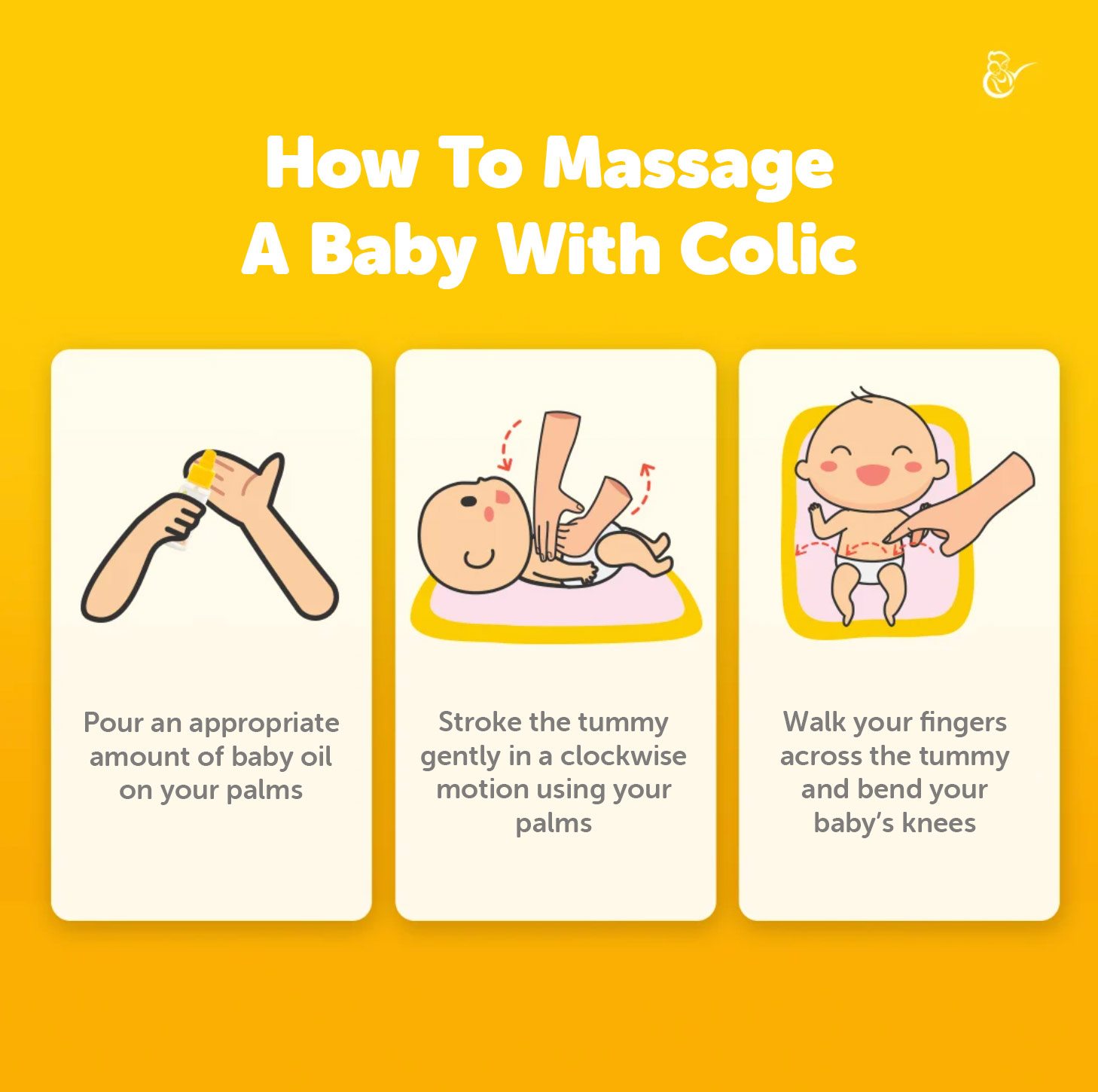There’s no need to be confused or feel guilty when your baby is crying for no reason. For one, it is one of the most common signs baby has colic. Don’t know what colic is? Find out what causes it, the symptoms to look out for, and what to do when baby has colic.
Babies cry a lot, and that’s a fact. But what separates a normal “cry” for babies is that colic is when there’s no apparent reason your baby is crying. Johns Hopkins Medicine emphasizes colic as nonstop crying for more than 3 hours a day, happens more than 3 days a week, and happens for more than 3 weeks.
This definition is actually born from the research of a paediatrician named Dr Morris Wessel. As such, colicky babies are usually diagnosed when they meet the “Rule of 3’s” or the Wessell Criteria.
It’s pretty common among newborns and occurs in 1 in 5 babies. Experts say that colic is harmless as long as their nutritional needs are met. Colic also can go away on its own once the baby is around 3 to 4 months. But in some cases, it can last until 6 months.
What Causes Colic?
Up to this day, many experts are still unsure of the definitive cause of colic. However, we’ve rounded up the causes of colic that organizations like the American Pregnancy Association, John Hopkins Medicine, and the American Academy of Family Physicians have shared.
- Trouble adjusting to the world
- Inability to calm themselves
- Milk allergy or intolerance
- Being bothered by a Mama’s diet (in breastfed babies)
- Not burping after a feeding
- Immature nervous and digestive system
- Discomfort from gas or indigestion
- Overstimulation
Although any baby can have colic, some experts believe that babies have twice the chances of having colic when their Mamas smoked during pregnancy.
What Are The Signs Baby Has Colic?
Crying is a baby’s only way of communicating when he or she is feeling hungry, tired, or uncomfortable. But with colic, babies are inconsolable.
It can be difficult to distinguish a normal cry from colic, especially when you’re a new Mama. As such, here are some signs baby has colic that can help you out.
- Babies crying for no reason. For example, crying even after your baby has just finished eating or changing diapers.
- Crying episodes that usually occur at the same time each day. Generally, in the afternoon or evening.
- Crying for 3 hours or more every day, more than 3 days a week, for at least 3 weeks
- Making a loud, screaming sound, unlike the usual crying.
- When your baby cries with the hands clenched into fists, knees pulled to the stomach, face red from crying, and the back arched.
- Stomach muscles tighten when crying.
- Bloated baby belly.
- Restless and inability to be soothed.
What To Do When Baby Has Colic
When it comes to relieving colic in babies, medication is not usually recommended. Instead, parents are encouraged to find their baby’s triggers and discover ways to soothe or lessen their crying.
For breastfeeding Mamas, try to track what you eat and drink. Some babies react to a Mama’s baby diet, so this could potentially be your baby’s colic trigger. In addition, it’s best to avoid stimulants like caffeine and chocolate. Finally, if you’re taking any medication during your baby’s colicky phase, check with your doctor if it might be the culprit.
For formula-feeding Mamas, a different brand may do the trick. Moreover, try to reduce the frequency of feeds and the amount of milk you’re giving. Another tip to relieve colic in babies is to feed babies in an upright position.
Besides these, you can also try the tips below to help deal with colic in babies:
- Swaddle your baby during a colic episode
- Hold and gently rock your baby
- Give skin-to-skin contact
- Don’t forget to burp the baby after feeding
- Bring your baby to a quiet, calming place
- Take your baby out for a ride in the car or the stroller, as the motion can be soothing for some babies
- Give your baby a warm bath
- Give your baby a gentle massage
- Sing a song or play soothing music (which is also great to help babies sleep)
Try a Baby Massage for Colic
A gentle baby massage is often recommended to soothe a colicky baby, and for a good reason–there’s nothing like a Mama’s touch! When it comes to massage a baby with colic, you can stroke the tummy gentle in a clockwise motion using your palms, walk your fingers across the tummy, and bend the baby’s knees.
Such movements help reduce discomfort and expel gas trapped in the digestive tract, should their colic be triggered by indigestion or stomach pains.
You can also make the most out of a baby massage by using a baby tummy oil specifically formulated for helping with colic. Such products are often enriched with natural ingredients that help to calm a colicky baby.
Now, with all these tips in mind, it’s still important to remember that there’s no one way to relieve colic in babies. Some of the tips we shared may work. Some may not work at all. The important thing is to find one that works for you and your little one.
Did you find this article about what to do when baby has colic helpful? Click the share button and help a fellow Mama!
Mama's Choice Team
The Mama's Choice PH team is composed of three Mamas who are dedicated to spoiling their little ones with lots of cuddles, playtime and the occasional sweets, of course. <3








